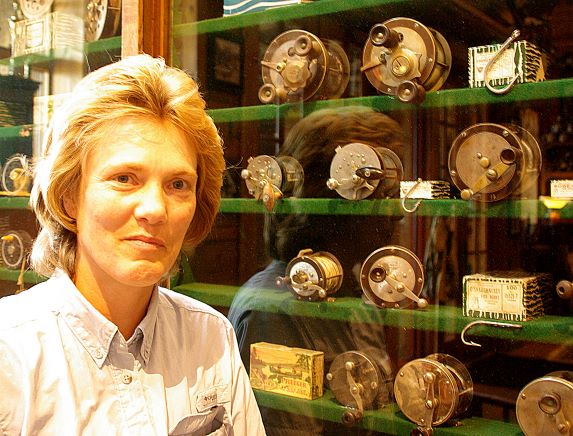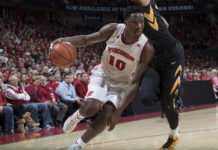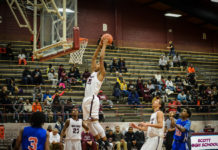
Fishing rod cocked backwards and ready to let fly, Pamela Peters’ mind is on a hundred different things.
Did the breeze play with the lure back there, twitch it this way instead of that? Have to account for that in the cast. Is the lure flying differently because today is more humid than yesterday? “Bump” the reel — that is, put on the brakes just a little, once, twice, maybe three times — to make the lure fly right. Ripples in the square of water that’s the target? That’s to be accounted for as well.
Do all of that and more, and do it enough times, and you’re a national champion, as Peters is.
For all that, says the Oregon woman, fishing’s just a hobby.
Technically, she’s right — her job in loss prevention puts food on the table and keeps the roof overhead in repair — but the art and science of fly fishing and bait casting is what switches the analytical part of her mind to the full “on” position and keeps it there.
That mindset has earned her multiple national and international titles and a handful of records, including some that are the best posted by any angler, man or woman.
It also means Peters “can go anywhere in the world and (know how to) fish any way I want,” she said.
It meant she could make good on a promise to a friend that she’d pull three salmon out of a river during one morning’s fishing, even though she threw the second and third back after realizing she’d have to carry the 35-pound fish a couple of miles back through the woods. She found someone at the fishing lodge to clean the fish, which provided a few meals over the next couple of days.
Peters enjoys fishing for steelhead because that fish puts up a good fight, and she likes catching lake perch “to fill up the freezer.”
Her interest in fishing started innocently enough, when she was a girl.
“I have three brothers and we had a cottage and that was the thing we did,” she said.
From the shore, then from a boat, then from a boat with a motor, “We went all over the place,” she said, laughing.
Her dad, William Peters, a dedicated caster himself, worked with his daughter on her technique and soon she was taking part in competitions, winning and finding new things to learn, often from the top competitors.
At an early competition, the men’s champion, Steve Rajeff, asked her why she wasn’t in the fly-casting events; she replied that she didn’t have a the proper type of rod for fly-casting.
“That evening … I was presented with my first fly rod. Fifteen years later, I shot a perfect score at national (competition) with that rod,” Peters said.
That gift was one of the first instances of a competitive kind of cooperation among casters, Peters said. The rod was made by the Loomis Co., for which Rajeff worked as a designer. Besides wanting to help, Peters said, there’s competitive value in being able to say someone succeeded with a tool you provided or a technique you taught.
It also furthers the sport and the industry, she said.
Pointing to a display case full of old reels inside the entrance to Bass Pro Shops in Rossford, Peters talked about how each improvement in design came about from a caster wanting to give himself or herself an edge.
“There’s a lot of history here,” she said, looking at the rows of reels, many worn with use but still gleaming like jewels inside the display case.
So far, Peters said the most technical thing she’s done is to take apart each new reel she’s bought and clean it, replacing the heavy oil used by the manufacturer with a lighter-weight oil such as WD-40, so the reel spins more freely.
She’s come full circle as a mentor and teacher, too, helping casters both competitive and casual study their forms and techniques, figuring out how to make sure the lure lands where they want it, with the greatest possible likelihood it will come back out of the water with a fish attached.
She and her father have even taken part in a study at the University of Toledo, attaching targets to their limbs and bodies so cameras could track and analyze their body motions to see what makes a cast a winning one.
The circle may become even more complete if one day she takes over from her dad — a retired millwright — designing and tying flies for herself and other anglers.
“But for now,” she said, eyeing the row of gleaming reels one more time before heading into the shop to see what’s new, “it’s just a hobby.”
























